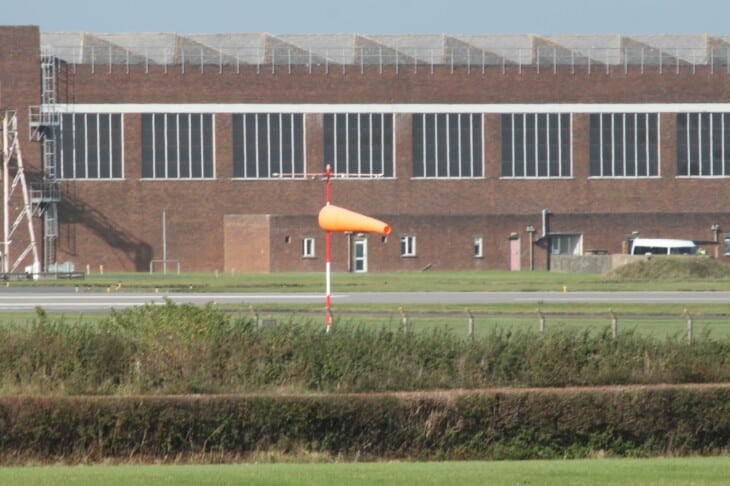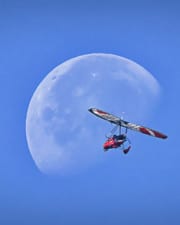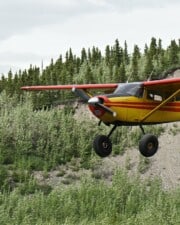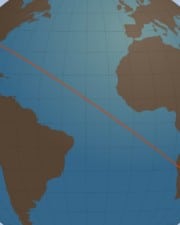Pilots often mistake headwinds and tailwinds for one another. Indeed, both are similar but very different from one another and just as important to every type of pilot. So what’s the difference between them?
This comparison will aim to explain precisely what each type of wind is, when and how they are important to you as a pilot, and provide an exact breakdown of how they are different, so you’ll never confuse them for one another ever again!
About Headwinds
Wind is air that is moving, relative to the Earth’s surface. The movement comes from weather systems, which in turn get their energy from the rotation of the Earth and the heating effect of the Sun.
Looking at the whole of the globe, we see cold air sinking at the poles, and warm air rising at the Equator, causing winds that flow toward the Equator, following curved tracks thanks to the Coriolis effect caused by the Earth’s axial spin. That’s how winds get going.
For a headwind to be a thing, we ourselves have to be moving (or intending to move). If the wind is blowing into our face when we move, it’s a headwind. But there’s a bit more to it than that.
Imagine walking in a straight line, due north. The wind might be coming directly out of the north onto your face, but it’s unlikely to be.
If you feel a headwind – that is, one that is blowing against you, slowing you down – it could be coming from any direction between just north of east, and just north of west.
If you are heading exactly north (heading 000º) and the wind direction is anything from 271º to 089º, that means you have a headwind component. Keep in mind that wind direction is always the bearing the wind is blowing FROM, not where it’s blowing TO.
To calculate the actual headwind component when the wind is not coming from dead ahead, you need to look out your high school trigonometry books and get back into sines and cosines.
They say every equation an author writes halves his readership, so I’ll not quote it here. You can find it via this link.
What Effects Can Headwinds Have?
As we’ve seen, headwinds can slow us down when we are running or walking. They can slow us down when we’re flying, too. If you’ve been on a return transatlantic passenger flight, you’ll probably have noticed your eastward leg took a lot less time than the return westward trip.
That’s because the prevailing winds over the Atlantic tend to blow out of the west. Generally, pilots don’t like headwinds in the cruise phase of flight, because they increase fuel burn and make the flight take longer. From the airplane’s point of view, it’s as though the distance was longer.
Headwinds aren’t always bad, though, as we shall see later on.
About Tailwinds
All of the above, about headwinds, applies exactly in reverse to tailwinds. Back on our walk towards the north, if we feel the wind blowing us along and making each step easier, we have a tailwind component. That means the wind could be blowing from any bearing between 091º and 269º.
What Effects Can Tailwinds Have?
On a long flight, tailwinds in the cruise phase can have a large effect on fuel burn and arrival time. Just as it did on our walk, a tailwind wafts us along in the air, so the ground passes underneath us faster, and we reach our destination in a shorter time.
On takeoff and landing, tailwinds are a hindrance, for exactly the opposite reason that headwinds are good. A tailwind on takeoff reduces airspeed, eating up valuable runway while we try to catch up with the wind and get moving fast enough to fly.
Should we experience an engine failure, we might find we don’t have enough runway left to stop safely. The same logic applies to landing.
A tailwind on landing has us moving faster along the ground than through the air, so our landing run is longer and we need to get rid of more energy after touchdown.
How Are Headwinds and Tailwinds Different?
It all depends on our direction of motion. The same wind can be either a headwind or a tailwind, depending on where we are headed. Imagine an airplane flying a racetrack holding pattern over a VOR waypoint, perhaps because of heavy inbound traffic at the destination.
Let’s imagine the plane is flying 1-minute legs in the hold, and the inbound heading to the waypoint is due north, 000º, the same direction as a 20-knot wind. On the inbound leg, the airplane experiences a headwind. When the plane turns outbound, that very same wind becomes a tailwind.
If the pilot doesn’t correct for the wind, the airplane will get pushed gradually further south, as the northerly wind reduces ground speed on the inbound leg and increases it on the outbound.
That’s why, when flying a hold with one-minute legs, pilots correct by one second per knot of component.
So, in this simple example with a 20-knot wind component, the pilot would fly 40 seconds outbound from the waypoint, and 80 seconds inbound, to avoid the airplane drifting from where it should be in the hold.

How Are Headwinds and Tailwinds Similar?
Headwinds and tailwinds are both winds, caused by moving air. Whether a given wind is a headwind or a tailwind depends only on our direction of motion.
In some extreme meteorological conditions, the same runway can experience different wind conditions at different points along its length. This can happen at airports located within very hot climate zones.
The effect is that a headwind on final approach – exactly what the pilot wants – can quickly turn into a tailwind, because of windshear.
Modern airliners are equipped with windshear warning systems, which alert pilots to a possible imminent loss of airspeed caused by a shift in wind direction during landing.
If the pilot has reason to suspect that a safe landing is not possible, he or she will execute a go-around.
What’s Better About Headwinds?
There are times, in the air, when we want our ground speed to be as low as possible. One of those times is on takeoff. At that time, a headwind is our friend, because our airplane only cares about air flowing over (and under) its wings, when it’s flying.
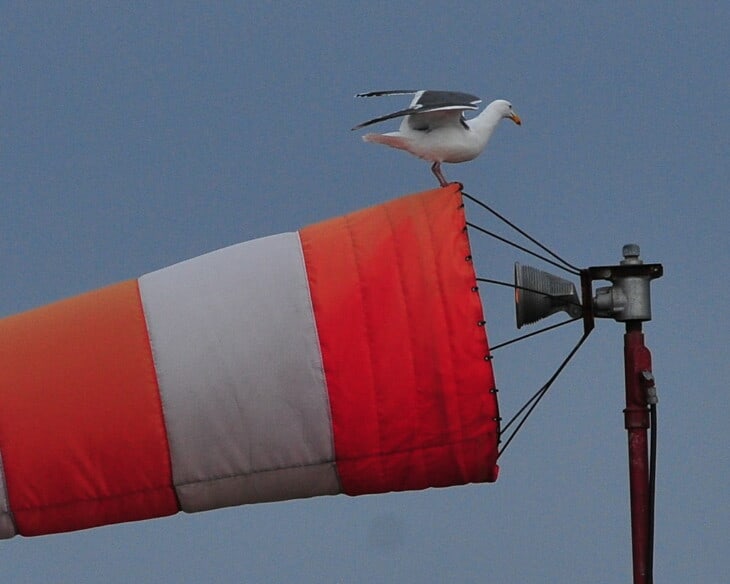
A headwind means the air is hitting the wings faster than the airplane’s speed along the runway. That means we reach flying speed sooner, with more runway remaining, which is a good thing in case we have to abort the takeoff and stop the airplane safely.
It’s the reason why almost all takeoffs are made into the wind if at all possible. Just like the walking example above, though, the wind is rarely coming straight down the runway. For most takeoffs, we use the runway direction that gives us a headwind component.
We keep in mind there will probably also be a crosswind component that we will have to correct for.
All of the above applies to landings, too. Landings are made with a headwind component, to avoid using up too much runway, and making the touchdown ground speed as low as possible. This helps us stop safely.
In summary, headwind increases lift that an airfoil generates at any given ground speed.
What’s Better About Tailwinds?
Tailwinds are good for the cruise phase of a flight. When it’s flying, all that matters to your airplane is the air mass it’s moving through.
If there is a tailwind (or a tailwind component), that air mass is moving the way we want to go, so it’s doing some of our work for us, saving our fuel, and getting us to our destination sooner.
Pilots look carefully at the forecast winds aloft when planning a flight. Wind data are available for each waypoint en route, at different altitudes and flight levels. This allows the pilot to select the optimum cruising altitude, to maximize any tailwind component in the cruise.
Conclusion
Ask Bob Dylan and he’ll likely tell you the answer, my friend, is blowin’ in the wind.
Both headwinds and tailwinds are great for airplanes and their pilots, provided we experience them at the right times.
If you want to wish a fellow pilot good luck, wish him or her headwinds for takeoff and landing, and tailwinds for the cruise. That’s the ideal formula, combining safe departure and arrival with the quickest and most efficient overall flight time.
When you’re interacting with the ground, during takeoff and landing, you want headwinds, preferably straight down the runway so you don’t have to crab your airplane along the centerline in a crosswind.
When you’re up there among the clouds en route from A to B, a stiff tailwind will save your fuel dollars and get you more quickly to where you want to be.
Related Posts
